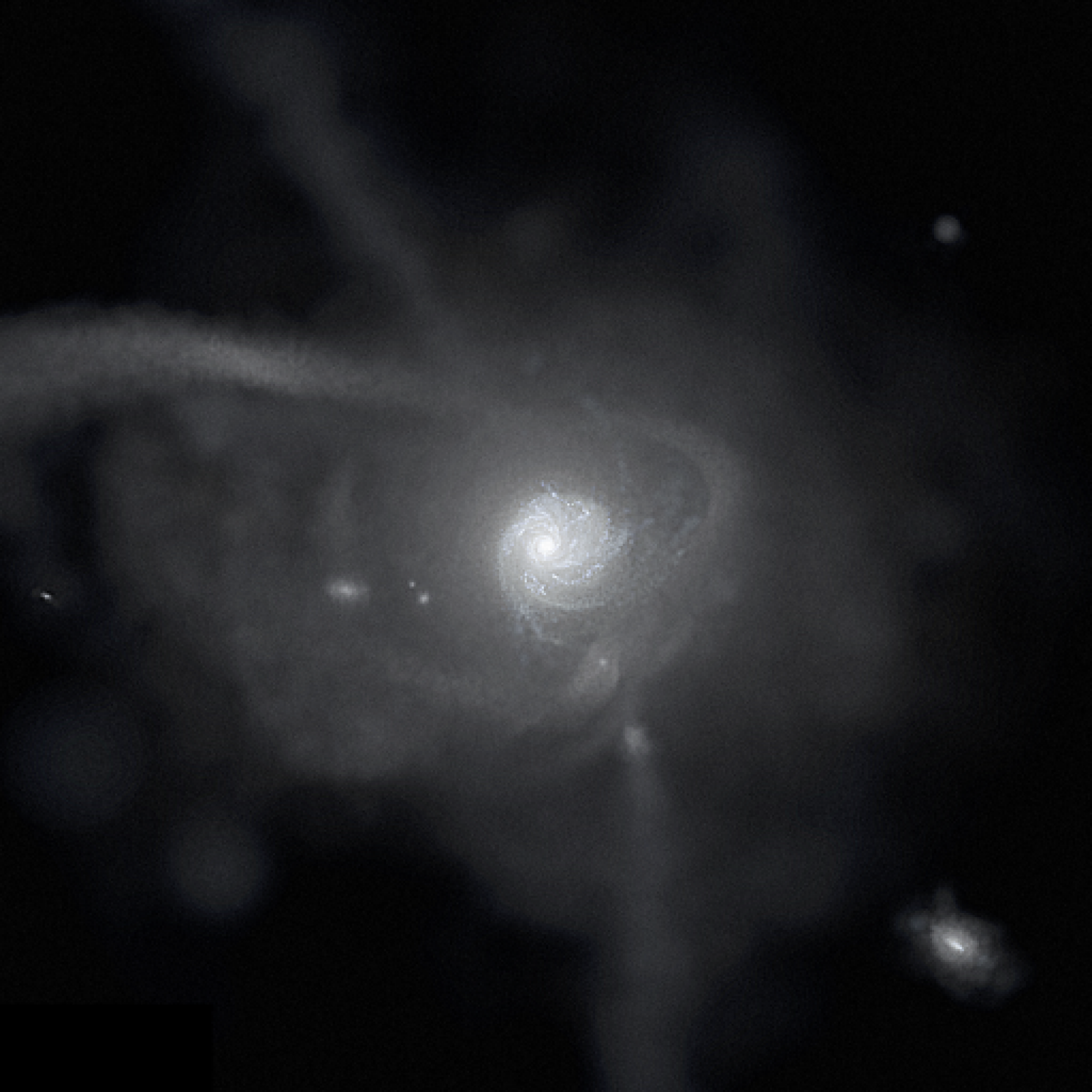
The Feedback In Realistic Environments (FIRE) simulation project pushes the frontier of cosmological zoom-in simulations of galaxy formation. We pursue a ‘bottom-up’ approach of resolving the multi-phase interstellar medium, while implementing stellar evolution models as directly as possible, all within a realistic cosmological setting. With this, we seek to improve the predictive power of galaxy formation models and connect them to underlying stellar populations.
Our group at UC Davis is part of the FIRE collaboration. We use and develop the FIRE physics models for galaxy formation.
The Gizmo source code for running FIRE simulations is publicly available, and our FIRE-2 simulations are publicly available. In Wetzel et al 2023 and Wetzel et al 2025, we describe the public data releases of the FIRE-2 simulations, available at flathub.flatironinstitute.org/fire. We provide full snapshots from 119 different simulations, spanning massive to Milky Way-mass to ultra-faint galaxies, with up to 601 snapshots for each simulation across z = 0 to 99, as well as halo/galaxy catalogs, full halo merger trees, particle tracking, 3-D formation coordinates for star particles, and several additional data products. In Wetzel et al 2023 we describe our first data release (DR1), including comprehensive descriptions of FIRE-2 simulations and data products, as well as various publicly available Python analysis packages to make reading and using these simulations easier. In Wetzel et al 2025 we describe our second data release (DR2), in which we provide all snapshots for most simulations, as well as simulations with physics variations, including (1) dark-matter-only, (2) modified ultraviolet background with later reionization, (3) magnetohydrodynamics (MHD), and (4) cosmic rays.
These ‘full’ data releases extend our initial data release (DR0) of a subset of FIRE-2 simulations, which contained complete snapshots of 3 of our Latte simulations of Milky Way-like galaxies at z = 0, accompanied by our Ananke synthetic Gaia DR2-like surveys that we created from these simulations (Sanderson et al 2020), which are available via yt Hub at ananke.hub.yt.
FIRE resources
Hopkins 2015
Describes the Gizmo source code and new mesh-free hydrodynamics method.
Hopkins, Wetzel et al 2023
Describes the FIRE-3 physics model.
Hopkins, Wetzel et al 2018
Describes the FIRE-2 physics model, with numerous numerical tests.
Hopkins, Wetzel et al 2018
Describes our method for modeling mechanical feedback from supernova explosions and stellar mass loss in the FIRE simulations.
Hopkins et al 2019
Describes our method for modeling radiative feedback from stars in the FIRE simulations.
Gizmo users guide
Comprehensive documentation of the Gizmo source code (which we use to run FIRE simulations) and contents of simulation snapshots.
Gizmo source code
Publicly available version of the Gizmo source code (written in C), which contains (almost) all of our FIRE physics modules.
Gizmo snapshot reader and analysis package
Python software package that I develop and use to read and analyze Gizmo snapshots of FIRE simulations.
Publicly available Latte simulation snapshots + synthetic Gaia surveys
Full snapshots at z = 0 and synthetic Gaia DR2-like surveys from 3 Milky Way-like galaxies in the Latte suite of FIRE-2 simulations.
FIRE-2 public data release 1 (Wetzel et al 2023)
Full snapshots of 46 different simulations, spanning z = 0 to 10.
FIRE-2 public data release 2 (Wetzel et al 2025)
119 different simulations, with up to 601 snapshots spanning z = 0 to 99, including physics variations.


